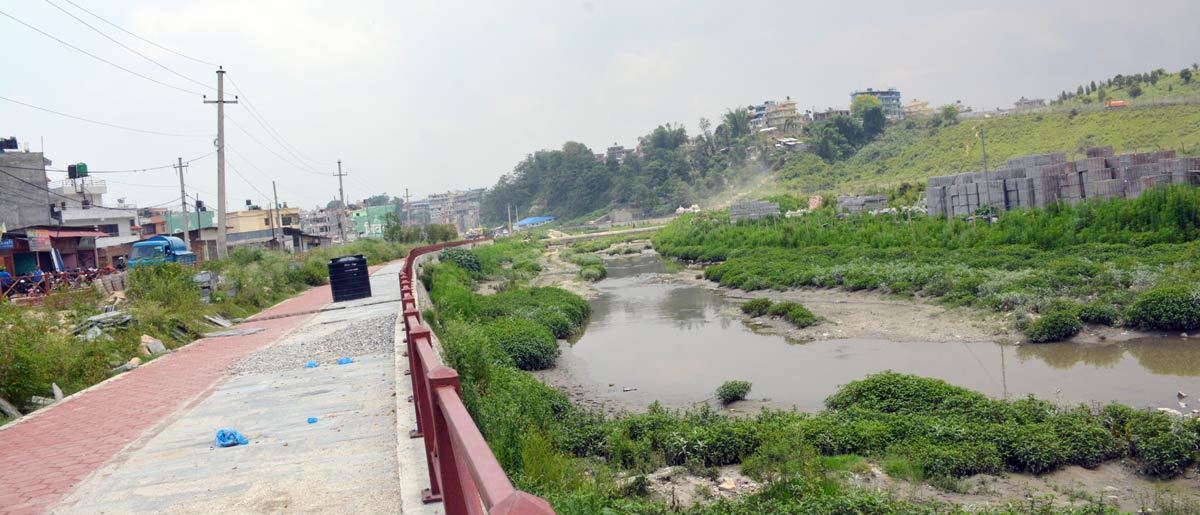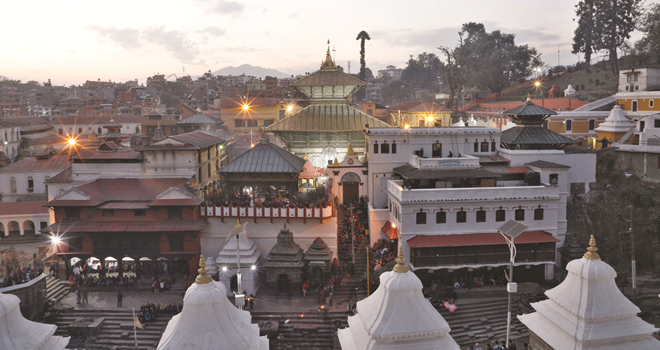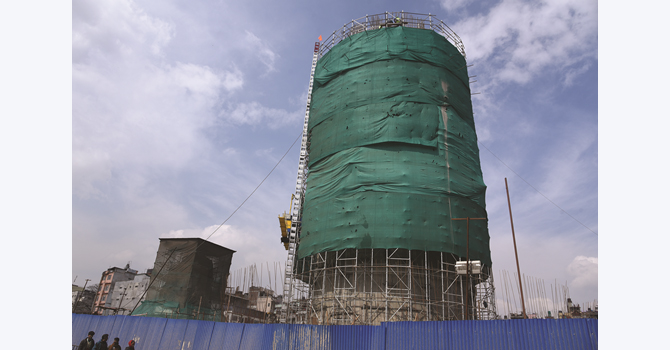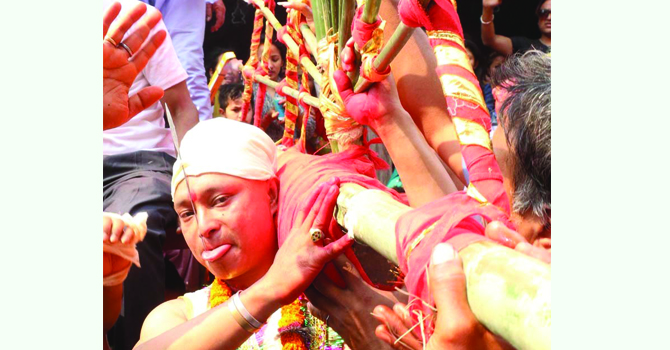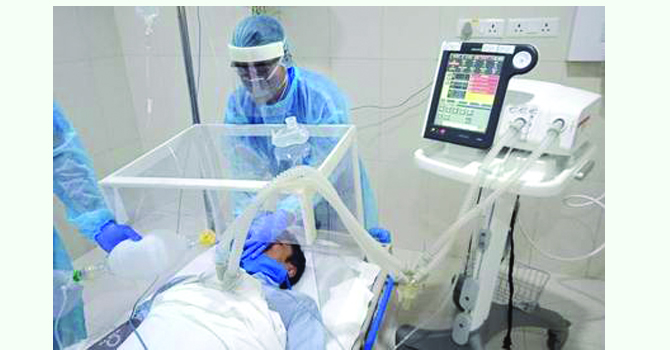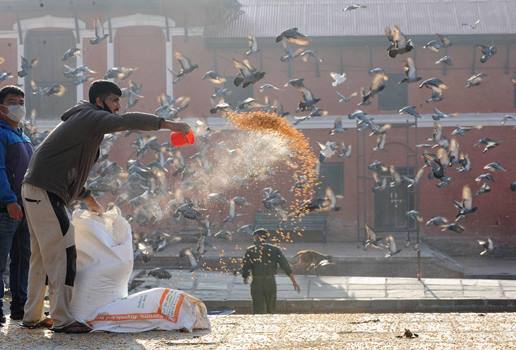Spouts all around, but only few have running water
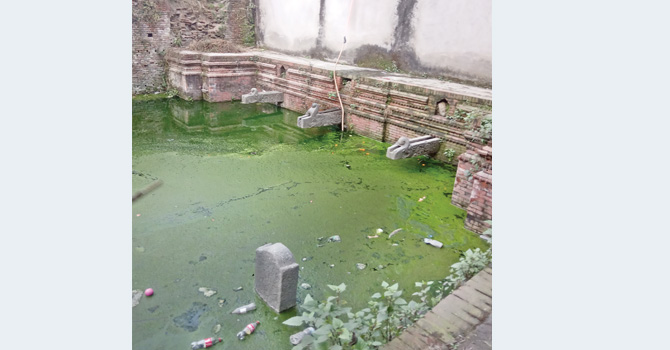
By Binu Shrestha
Kathmandu, Feb. 10: The stone spouts or dhunge dhara, called hiti in Newari, in Kathmandu Valley have been gradually disappearing due to the growing urbanisation of the city combined with government’s indifference to preserve them even though they are vital sources of water for people living in the city.
Hitis served as prominent water sources inside the Kathmandu Valley for centuries. Despite their immense traditional, cultural and social importance, water spouts have been drying and vanishing due to the negligence of the responsible agencies. The Department of Archeology (DoA), local government, Guthis are mainly responsible to preserve and renovate them.
In 2019, a survey by the Kathmandu Valley Supply Management Board (KVWSMB) found a total of 573 hitis in ten municipalities of the Kathmandu Valley. Of the 573 spouts, 52 were completely lost, 497 recovered and 42 not found.
KVWSMB had conducted this survey taking two years with the aim of preparing a comprehensive geo-database of all stone spouts and help researchers, policy makers and relevant stakeholders to make comparative study of this source in the future.
The report said that 179 stone spouts were found in Kathmandu Metropolitan City. Of them, 52 have been lost while 127 are in existence. As regards the water flow in these stone spouts, 79 had gone dry, eight are on verge of drying and 40 have water flowing from them.
In terms of overall situation of these water spouts, 77 are in good state, 47 in fair and three in bad condition. The daily discharge capacity of KMC water spouts is estimated 382,399 litres, the report said. For the last two years, local youths from Ashan have been putting their remarkable efforts to excavate and preserve the buried hitis of several places after the government did not make efforts to preserve them.
Works on the hiti preservation task of Kathmandu Valley had begun with the objective to protect them from vanishing forever.
‘‘We had appealed to the government authorities to preserve them, but they did not respond. At last, we began hiti preservation campaign ourselves carrying the agricultural tools,” said Yadav Lal Kayastha, a campaigner.
They have been doing works in around 15 different places of Kathmandu and Madhyapur Thimi to preserve neglected and buried hitis.
During the exploration, they found there were four hitis on four corners of Ranipokhari.
Of them, a water spout located on left side on the way to Kamalpokhari from Durbarmarga Ward No. 1, is now preserved with the support of few locals. The Department of Archeology (DoA) and ward office were not positive to push the preservation process further, Kayastha said.
The second hiti - called Nherahiti – was built at the current subway of Bhotahiti. There were seven spouts but they vanished during the subway construction process. Of the seven spouts, some are found at the Chhauni Museum.
Two other hitis were found buried on the premises of Ranipokhari Corner Team (RCT) of Jamal and Nepal Electricity Authority of Ratnapark. Suresh Dangol, another member of the team, said they cleaned historical hiti of Kimdol Ward No 15 of Sawayambhu with the support of Nepal Army a year ago.
It was cleaned taking seven days mobilising daily a year ago. After that, ward office recently began the renovation process of this hiti. Another hiti of Bhuikhel in Swayambhu, named Janmadwar hiti, which was buried around 40 to 50 years ago, is to be excavated very soon, after completing the works of adjoining pond.
Ishwor Man Dangol, chair of Ward 15 and spokesperson of Kathmandu Metropolitan City, has given assurances that all the historical hitis buried under the ground would be excavated and preserved systematically. KMC is responsible for and has accorded priority to preserve and conserve all historical water spouts, he said.
Yangaa hiti of Jayabageshwori, May Chhonya hiti of Kimdol Ward No. 15, Dada hiti of Siddhkali of Madhyapur Thimi, Thapa hiti of Kameratar and water spout in front of Janak Education Material Centre are the noticeable works done by the hiti preservation team.
Despite their efforts, the water spout close to Sakha Complex of Hatisar remains buried even though they excavated the structure of the hiti.
The water spout known as Bhotahiti was buried during the construction of Sajha Store Complex.
Recent News

Do not make expressions casting dout on election: EC
14 Apr, 2022
CM Bhatta says may New Year 2079 BS inspire positive thinking
14 Apr, 2022
Three new cases, 44 recoveries in 24 hours
14 Apr, 2022
689 climbers of 84 teams so far acquire permits for climbing various peaks this spring season
14 Apr, 2022
How the rising cost of living crisis is impacting Nepal
14 Apr, 2022
US military confirms an interstellar meteor collided with Earth
14 Apr, 2022
Valneva Covid vaccine approved for use in UK
14 Apr, 2022
Chair Prachanda highlights need of unity among Maoist, Communist forces
14 Apr, 2022
Ranbir Kapoor and Alia Bhatt: Bollywood toasts star couple on wedding
14 Apr, 2022
President Bhandari confers decorations (Photo Feature)
14 Apr, 2022


